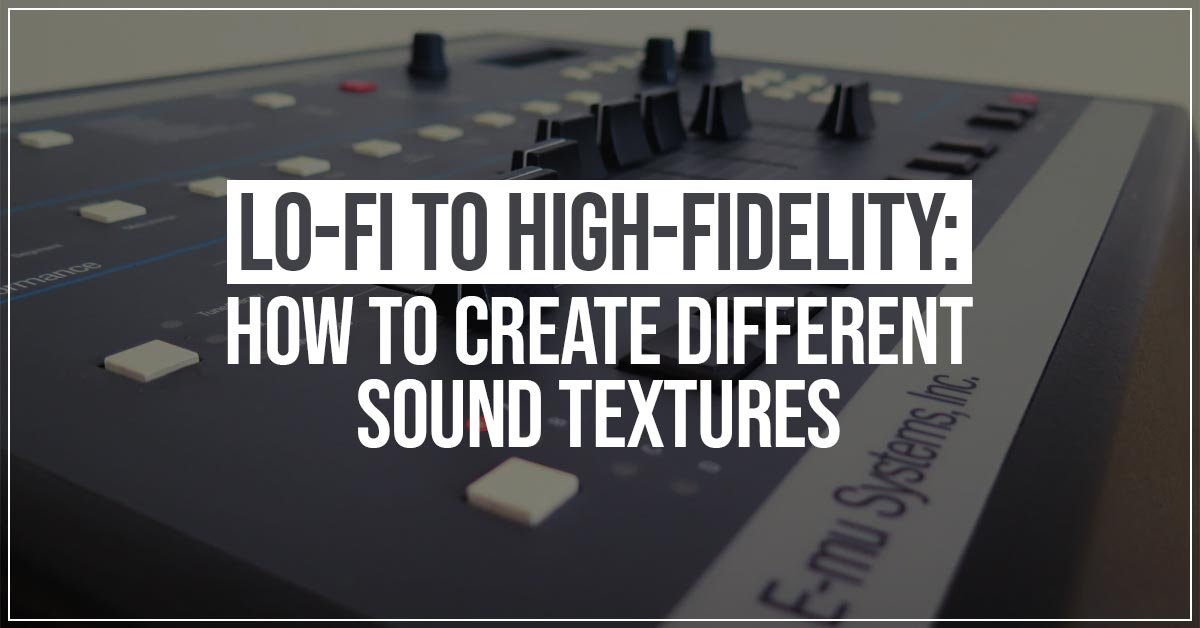Lo-Fi to High-Fidelity: How to Create Different Sound Textures

Sound textures describe the special feel of music: they give a track depth and emotion. Knowing and mastering sound textures is therefore important to every music producer wanting to make interesting music. This range offers different auditory experiences-from the warmth and nostalgia of lo-fi to the articulateness and distinctness of high-fidelity. In this blog by Tase, the best sound engineering colleges in Chennai, let’s see how to create different sound textures.
Understanding Lo-Fi And High Fidelity:
Lo-fi embodies the flaws of analog sound and its personality with warm fuzziness and vinyl crackle. It often evokes older recording techniques-low sample rates giving warmth, grit, and nostalgia-to seem like an invitation into an experience.
High-fidelity puts its focus on clarity, to be able to pick up the whole audio range with great precision. It is the approach that values being accurate and transparent, allowing each of the notes and frequencies shine and come alive. This would point to Hi-fi as clear and detailed sound-a technology designed to immerse listeners fully in a high-quality sonic landscape. It will be different terms of emotional impact-each on the listener and experience. To have a better understanding of the Lo-Fi and High Fidelity join our music production courses in India where you can make these textures that relate with your audience.
Techniques For Creating Lo-Fi Sound Textures
Achieve a lo-fi sound through intentional layering of imperfections and character:
-
Tape Hiss And Vinyl Crackle:
Adding those subtle static-like sounds mimics the qualities of analog recordings, therefore giving the music a nostalgic, vintage feel. These are often used as background layers to establish an immediate lo-fi atmosphere.
-
Downsampling And Bit Reduction:
The sound quality deteriorates, giving a gritty, compressed feel with a decrease in sample rate and bit depth. This may make digital clarity sound raw, rugged, and earthy.
-
EQ:
A simple technique in rolling off higher frequencies creates warmth that simulates analogue equipment used many years ago to record a track. This subtle “muddying” of the audio reduces the biting definition of digital clarity, fostering an aura of comfort and age.
-
Effects (Reverb, Delay, Chorus):
Lo-fi soundscapes tend to thrive using minimal effects. Distant reverb, old-fashioned echo, and a light chorus can contribute to ambiance and depth, giving it the sense of deep space and dreaminess required for lo-fi music.
Techniques To Achieve Lo-Fi Sound Textures
Lo-fi sounds are supposed to capture the notion of the original music as vivid and perfect as possible:
-
Precision EQ:
Fine-tuning the frequency of hi-fi production helps each instrument and vocal be heard clearly without overlap of any sort. This helps to keep clarity and balance in the overall sonic sphere.
-
Higher Sample Rates And Bit Depths:
When there is a higher sample rate and bit depth during recording or mixing, each element will be captured with absolute clarity, preserving all nuances in what makes for a polished, high-quality sound.
-
Stereo Imaging:
The stereo field is opened up to create more spatial depth, so the listener can hear sound on both sides and all around. A well-defined stereo image produces a richer, fuller listening experience, specifically with quality speakers or headphones.
-
Clean Reverb And Modulation Effects:
Where a hint of effects in hi-fi music might be something that might appeal, effects need to be subtle and should not over-become clarity. Clean, well-controlled reverbs and moderate amounts of restraint in modulation can open up space without losing that sharp, transparent sound.
Balancing Lo-Fi And High-Fidelity Elements
Most producers try out mixing lo-fi and high fidelity because it may help contrast and variety. They use a song, for example, may start the song off with the thin lo-fi texture that sounds old, but later goes into full high-fidelity for the main section for drama. That way, they build their unique soundscape-nostalgic, clear, and take them on sonic journeys.
Mastering sound textures through the best sound engineering courses in India is a key music production element, enhancing the listener’s connection to the music. Combining lo-fi warmth and hi-fi clarity, music producers are able to create dynamic, engaging pieces that transcend and have a multidimensional effect; they speak beyond traditional sound.

